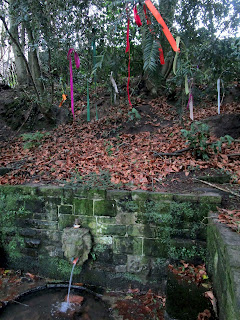... it would be easier to say, was the same as nearly every year, except there are always variations on a theme. Every event was better attended than in 2023, in fact better than for several years. The Crib Service has never been quite the same since the tragic loss of our friendly donkeys (don't worry - it was only tragic for us, nothing malign befell them), but this time we were standing-room only which was very gratifying. The slightly quieter and more intimate model of Midnight Mass suited the fifty-plus attenders, and on Christmas Day itself - which I had been concerned was dying off - we numbered 14 at the Missa Ad Gallicantu and over 80 later on. This would have been fairly unremarkable about twenty years ago, but it's quite pleasing to experience now in these dark days.
This is especially so because I'd been feeling a little ground down earlier on. Not for the first time, the usefulness of the Office struck me: its quiet concentration on texts contrasts with all the whizz and bang around it, and allows clergy especially, I think, to focus on what the season means. There is a deep wisdom in arranging that the transition from Advent to Christmas should happen with this undemonstrative liturgy - undemonstrative even if you belong to a religious community such as a cathedral celebrating it as Evensong, and all the more so a parish priest on their own like me. You're not really going to be nourished anywhere else.
Outside the church after the Crib Service I noticed Robert and a group of other fellows whose children have passed through the church (and I fear out of it, but such is life) together. The grown-ups still come to this service even if the children are elsewhere. And the chaps, at least, have for years marked the occasion by downing a shot of Croft Original supplied by a hip flask Robert is charged with carrying. I've never noticed this quaint custom before. Then at the midnight I greeted one young man on his way out - it was Iain, who ten years or so ago belonged to one iteration of the fluctuating group of youngsters who used to cause havoc in and around the church. I think he may have had a young woman with him. But I don't mind what brings them in!
Picture from Smallham Chapel as we sing to the sheep.








